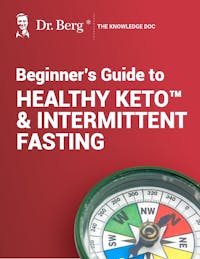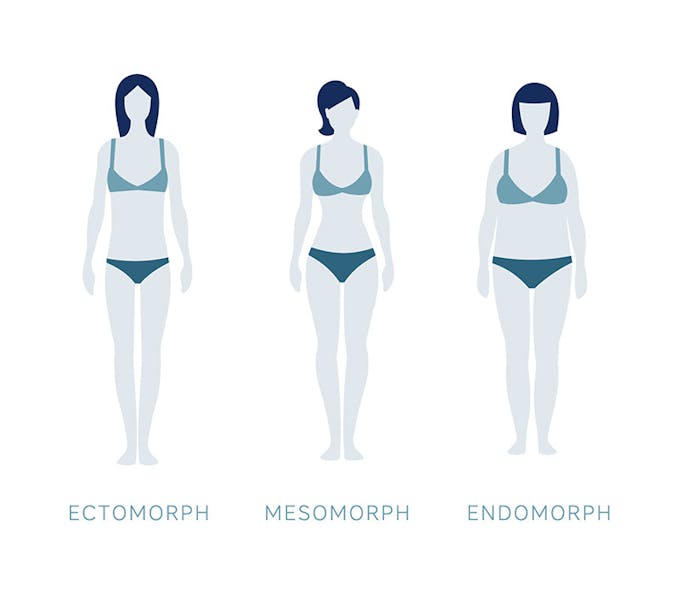Mesomorph Body Type Explained

How to Read Your Body
Learn to recognize common symptoms and uncover their underlying health issues
Understand the signs of nutrient deficiencies to manage your health
Explore the four metabolic body types and the core factors that influence them
Interpret your body's signals from head to toe to identify potential health concerns

How to Read Your Body
Learn to recognize common symptoms and uncover their underlying health issues
Understand the signs of nutrient deficiencies to manage your health
Explore the four metabolic body types and the core factors that influence them
Interpret your body's signals from head to toe to identify potential health concerns

How to Read Your Body
Learn to recognize common symptoms and uncover their underlying health issues
Understand the signs of nutrient deficiencies to manage your health
Explore the four metabolic body types and the core factors that influence them
Interpret your body's signals from head to toe to identify potential health concerns

How to Read Your Body
Learn to recognize common symptoms and uncover their underlying health issues
Understand the signs of nutrient deficiencies to manage your health
Explore the four metabolic body types and the core factors that influence them
Interpret your body's signals from head to toe to identify potential health concerns

How to Read Your Body
Learn to recognize common symptoms and uncover their underlying health issues
Understand the signs of nutrient deficiencies to manage your health
Explore the four metabolic body types and the core factors that influence them
Interpret your body's signals from head to toe to identify potential health concerns

How to Read Your Body
Learn to recognize common symptoms and uncover their underlying health issues
Understand the signs of nutrient deficiencies to manage your health
Explore the four metabolic body types and the core factors that influence them
Interpret your body's signals from head to toe to identify potential health concerns

How to Read Your Body
Learn to recognize common symptoms and uncover their underlying health issues
Understand the signs of nutrient deficiencies to manage your health
Explore the four metabolic body types and the core factors that influence them
Interpret your body's signals from head to toe to identify potential health concerns

How to Read Your Body
Learn to recognize common symptoms and uncover their underlying health issues
Understand the signs of nutrient deficiencies to manage your health
Explore the four metabolic body types and the core factors that influence them
Interpret your body's signals from head to toe to identify potential health concerns

How to Read Your Body
Learn to recognize common symptoms and uncover their underlying health issues
Understand the signs of nutrient deficiencies to manage your health
Explore the four metabolic body types and the core factors that influence them
Interpret your body's signals from head to toe to identify potential health concerns

How to Read Your Body
Learn to recognize common symptoms and uncover their underlying health issues
Understand the signs of nutrient deficiencies to manage your health
Explore the four metabolic body types and the core factors that influence them
Interpret your body's signals from head to toe to identify potential health concerns

How to Read Your Body
Learn to recognize common symptoms and uncover their underlying health issues
Understand the signs of nutrient deficiencies to manage your health
Explore the four metabolic body types and the core factors that influence them
Interpret your body's signals from head to toe to identify potential health concerns

How to Read Your Body
Learn to recognize common symptoms and uncover their underlying health issues
Understand the signs of nutrient deficiencies to manage your health
Explore the four metabolic body types and the core factors that influence them
Interpret your body's signals from head to toe to identify potential health concerns

How to Read Your Body
Learn to recognize common symptoms and uncover their underlying health issues
Understand the signs of nutrient deficiencies to manage your health
Explore the four metabolic body types and the core factors that influence them
Interpret your body's signals from head to toe to identify potential health concerns

Beginner’s Guide to Healthy Keto & Intermittent Fasting
Receive a step-by-step guide to starting Healthy Keto® and intermittent fasting
Learn about foundational principles and best practices for beginners
Get detailed visual guidance on portion sizes and meal composition
Discover how to set achievable goals and monitor your progress
Find practical tips for overcoming common challenges and staying motivated

Beginner’s Guide to Healthy Keto & Intermittent Fasting
Receive a step-by-step guide to starting Healthy Keto® and intermittent fasting
Learn about foundational principles and best practices for beginners
Get detailed visual guidance on portion sizes and meal composition
Discover how to set achievable goals and monitor your progress
Find practical tips for overcoming common challenges and staying motivated

Beginner’s Guide to Healthy Keto & Intermittent Fasting
Receive a step-by-step guide to starting Healthy Keto® and intermittent fasting
Learn about foundational principles and best practices for beginners
Get detailed visual guidance on portion sizes and meal composition
Discover how to set achievable goals and monitor your progress
Find practical tips for overcoming common challenges and staying motivated

Beginner’s Guide to Healthy Keto & Intermittent Fasting
Receive a step-by-step guide to starting Healthy Keto® and intermittent fasting
Learn about foundational principles and best practices for beginners
Get detailed visual guidance on portion sizes and meal composition
Discover how to set achievable goals and monitor your progress
Find practical tips for overcoming common challenges and staying motivated

Beginner’s Guide to Healthy Keto & Intermittent Fasting
Receive a step-by-step guide to starting Healthy Keto® and intermittent fasting
Learn about foundational principles and best practices for beginners
Get detailed visual guidance on portion sizes and meal composition
Discover how to set achievable goals and monitor your progress
Find practical tips for overcoming common challenges and staying motivated

Beginner’s Guide to Healthy Keto & Intermittent Fasting
Receive a step-by-step guide to starting Healthy Keto® and intermittent fasting
Learn about foundational principles and best practices for beginners
Get detailed visual guidance on portion sizes and meal composition
Discover how to set achievable goals and monitor your progress
Find practical tips for overcoming common challenges and staying motivated

Beginner’s Guide to Healthy Keto & Intermittent Fasting
Receive a step-by-step guide to starting Healthy Keto® and intermittent fasting
Learn about foundational principles and best practices for beginners
Get detailed visual guidance on portion sizes and meal composition
Discover how to set achievable goals and monitor your progress
Find practical tips for overcoming common challenges and staying motivated

Beginner’s Guide to Healthy Keto & Intermittent Fasting
Receive a step-by-step guide to starting Healthy Keto® and intermittent fasting
Learn about foundational principles and best practices for beginners
Get detailed visual guidance on portion sizes and meal composition
Discover how to set achievable goals and monitor your progress
Find practical tips for overcoming common challenges and staying motivated

Beginner’s Guide to Healthy Keto & Intermittent Fasting
Receive a step-by-step guide to starting Healthy Keto® and intermittent fasting
Learn about foundational principles and best practices for beginners
Get detailed visual guidance on portion sizes and meal composition
Discover how to set achievable goals and monitor your progress
Find practical tips for overcoming common challenges and staying motivated

Beginner’s Guide to Healthy Keto & Intermittent Fasting
Receive a step-by-step guide to starting Healthy Keto® and intermittent fasting
Learn about foundational principles and best practices for beginners
Get detailed visual guidance on portion sizes and meal composition
Discover how to set achievable goals and monitor your progress
Find practical tips for overcoming common challenges and staying motivated

Beginner’s Guide to Healthy Keto & Intermittent Fasting
Receive a step-by-step guide to starting Healthy Keto® and intermittent fasting
Learn about foundational principles and best practices for beginners
Get detailed visual guidance on portion sizes and meal composition
Discover how to set achievable goals and monitor your progress
Find practical tips for overcoming common challenges and staying motivated

Beginner’s Guide to Healthy Keto & Intermittent Fasting
Receive a step-by-step guide to starting Healthy Keto® and intermittent fasting
Learn about foundational principles and best practices for beginners
Get detailed visual guidance on portion sizes and meal composition
Discover how to set achievable goals and monitor your progress
Find practical tips for overcoming common challenges and staying motivated

Beginner’s Guide to Healthy Keto & Intermittent Fasting
Receive a step-by-step guide to starting Healthy Keto® and intermittent fasting
Learn about foundational principles and best practices for beginners
Get detailed visual guidance on portion sizes and meal composition
Discover how to set achievable goals and monitor your progress
Find practical tips for overcoming common challenges and staying motivated
The mesomorph body type typically has a medium-sized body shape, strong leg muscles, and moderate body fat. Their metabolism works efficiently, and mesomorphs find it easy to build muscle.
Find out if you have a mesomorphic body type and how to take your health and fitness to the next level.
What are the three metabolic body types?
According to research, most people fall into one of these three metabolic body type categories:
Mesomorph
Endomorph
Ectomorph
Let’s take a look at the common characteristics of each body type.
Mesomorph
The mesomorph body type is characterized by a medium skeletal frame with broad shoulders and an upright, rectangular stature. Mesomorphs generally are described as naturally muscular, have moderate body fat, and gain muscle mass quickly. This body type indicates an effective metabolism that helps mesomorphs lose weight fast.
Ectomorph
The ectomorph body type has a thin and slender body shape with a small waist and narrow shoulders and hips. They often are taller than average and have low muscle mass. Ectomorphs are prone to a fast metabolism and have less body fat than other metabolic types. They have higher calorie needs and require plenty of energy, which is why ectomorphs find it difficult to gain weight.
Endomorph
Endomorphs typically have a larger, round skeletal frame with a tendency to have excess body fat. This body type has less muscle mass and a weaker upper body than mesomorphs. The endomorph body type has a slow metabolism. Weight gain and difficulties building lean muscle are typical amongst this metabolic type.

What determines metabolic body types?
While your metabolic body type is primarily determined by your genes, your metabolism and overall energy requirements also significantly impact the size and shape of your body.
Genetics are important in determining how fast or slow your metabolism converts fuel to energy.
Your basal energy requirements depend on your levels of physical activity and your dominant nervous system trait. Your involuntary body functions—including heartbeat, breathing, and digestion—are governed by the autonomic nervous system, which relies on a balance between two opposing sides.
One side is your sympathetic nervous system which is activated by stress and triggers the body's fight or flight response. This nervous system trait requires more calories and increased fat-burning to sustain your body during periods of stress.
The calming and muscle-relaxing parasympathetic nervous system brings balance by dampening sympathetic nervous system activity. When activated, your body requires fewer calories, preserves energy stores, and lowers fat-burning.
While both nervous systems control your body's function, most people have one dominant nervous system trait, which significantly influences your body's energy requirements and metabolism.
The relationship between your genetics, your dominant nervous system trait, and the effectiveness of your metabolism determines your metabolic body type. Understanding how your body weight and body composition are affected by your metabolic body type helps your health and fitness goals.

Mesomorph body type explained
Mesomorph body types generally have a medium frame and upright posture, muscular chest, and strong arms and legs. This body type has more body fat and muscle mass than ectomorphs.
Mesomorphic bodies typically have a healthy weight and more lean muscle than body fat. Their efficient metabolism means mesomorphs can gain muscle quickly and lose weight easily. However, poor eating habits and lifestyle choices can result in weight gain for mesomorphs.
Mesomorph body type characteristics:
Medium-size skeletal frame
Rectangular and upright upper body
Strong leg and arm muscles
Muscular chest
Moderate amounts of body fat
Lose weight quickly
Efficient metabolism
What diet and exercise benefit mesomorphs?
Mesomorph body types typically have an ideal basal metabolic rate, meaning this body type converts food into energy efficiently and fast. The right diet and exercise regimens can help mesomorphs improve body composition, gain more muscle, and maintain a healthy weight.
Mesomorphs benefit significantly from a nutrient-rich diet, including healthy fats and protein, to avoid weight gain and maintain muscle mass.
Healthy Keto® is an ideal mesomorph diet plan providing plenty of nutrients. The keto diet supports steady energy levels, improved cognition, and a robust immune system.
It’s generally believed that mesomorph body types should consume higher protein diets. However, this body type often thrives when consuming fewer carbohydrates but more fat.
Research suggests that a low-carb, ketogenic diet is ideal for maintaining low body fat levels, supporting muscle gain, and improving metabolic function.
Intermittent fasting (IF) is an excellent pattern of eating for mesomorphs. IF promotes a healthy body, supports muscle repair, and boosts energy and cognition.
Mesomorphs are naturally muscular and can achieve excellent muscle definition with an exercise routine combining resistance training and focused weight training for each muscle group with moderate to heavy weights.
Cardiovascular exercise like high-intensity interval training (HIIT) helps overweight mesomorphs lose weight and body fat while maintaining muscle mass. Rest days are necessary to recuperate and allow muscle repair to take place.
By combining Healthy Keto with intermittent fasting, the mesomorph body type can support their fitness goals and improve body composition.

Metabolic vs. hormonal body types
Metabolic body types classify genetically predisposed body shapes influenced by basal metabolic rate and the body’s overall energy needs. These metabolic types explain your body size and indicate if you lose weight easily or gain weight quickly.
In contrast, hormonal body types categorize fat distribution and body composition that developed as a result of hormone imbalances. Hormones significantly impact your overall health and regulate fat storage and energy production.
Hormone imbalances can develop in response to prolonged stress, poor dietary choices, excessive calorie intake, and environmental pollution.
Take charge of your well-being and achieve a healthy weight by understanding how your hormone levels shape your body’s fat distribution.
Here are the five hormonal body types.

Adrenal body type
Adrenal bodies tend to have sagging bellies caused by fat deposits around the lower abdomen. This body type develops in response to the increased stress hormone cortisol produced by your adrenal glands.
Relaxation techniques, healthy sleep patterns, and a nutrient-rich, healthy diet are essential for the adrenal body type.
Pancreas body type
The pancreas body type results from chronic high blood sugar levels leading to hormonal and metabolic imbalances. This body type is the most common hormonal body type and is characterized by excessive belly fat.
The pancreas body type is at increased risk of insulin resistance and benefits from a diet low in carbohydrates and rich in nutrients.
Liver body type
The liver body type often has impaired liver function resulting in low levels of human growth hormone needed for fat-burning. People with this body type gain weight quickly and have difficulty losing body fat no matter what they eat.
Liver body types can improve hormone imbalances with a nutrient-dense diet high in cruciferous vegetables like cabbage, broccoli, and Brussels sprouts.
Ovary body type
Ovary body types gain weight easily and carry body fat around the upper body, hips, and thighs. Imbalanced estrogen levels can slow metabolism and impact fat deposition, resulting in ovary body types.
A diet focused on balancing hormones and rich in cruciferous vegetables like broccoli, mustard greens, and cabbage is ideal for the ovary body type.
Thyroid body type
Thyroid body types often carry excess body fat all over the body and gain weight quickly. Thyroid hormones directly influence the rate of your metabolism. They can be imbalanced as a result of elevated estrogen or impaired liver function.

Key takeaways
Mesomorphs have an athletic physique, broad shoulders, strong arms, and a muscular chest. The mesomorph body type tends to have an efficient metabolism and finds it easier to maintain a healthy weight than other body types.
Resistance exercises combined with high-intensity interval training helps mesomorphs to develop and maintain muscle and support heart health.
A nutritious, low-carb diet like keto in combination with intermittent fasting is an ideal choice for mesomorphs to reach their health and fitness goals.
FAQ
1. What are the three metabolic body types?
The three metabolic body type classifications are mesomorph, ectomorph, and endomorph.
2. How do I know if I’m the mesomorph body type?
You most likely have a mesomorph body type if you have a rectangular-shaped upper body and a muscular chest, and you don’t find it hard to lose weight and build muscle.
3. What’s the difference between metabolic and hormonal body types?
Your metabolic body type is genetically determined and influenced by your metabolism and your body’s energy requirements. Metabolic body types determine your natural body composition, fat distribution, and shape.
Hormonal body types characterize body compositions that develop as a result of underlying health conditions and hormone imbalances.
4. What is the ectomorph body type?
Ectomorph body types have little body fat and a small skeletal frame. They are of slender stature with long limbs and thinner upper bodies than other body types.
Ectomorphs have a fast metabolism and lose weight quickly. This body type tends to require more calories and benefits from weight training to develop muscle mass.
5. What is the mesomorph body type?
The mesomorph body type typically has a medium-sized, upright body frame with strong arms and legs. Mesomorphs have more body fat than ectomorphs and achieve muscle gain quickly.
This body type has a well-working metabolism, and mesomorphs typically find it easier to achieve healthy weight than endomorphs.
The ideal mesomorph diet is nutrient-rich and low-carb. Healthy Keto combined with intermittent fasting helps endomorphs improve body composition, build muscle, and easily maintain a healthy weight.
6. What is the endomorph body type?
Endomorphs are prone to develop excess body fat and gain weight quickly. They have a slow metabolism and find it challenging to build muscle. Endomorphs typically have a large skeletal frame with thick bones. They have weaker upper bodies and find it hard to lose weight.
This body type is prone to metabolic imbalances and is at risk of developing a hormonal body type. A low-carb diet like Healthy Keto, combined with intermittent fasting, is an ideal choice for endomorphs. This dietary pattern helps lose weight, improves hormone levels, and builds muscle.
7. Are metabolic body types the same as hormonal body types?
No, metabolic body types aren’t the same as hormonal body types.
Metabolic types classify inherited body types determined by genetics, metabolism, and your body’s basal energy requirements.
In contrast, hormonal body types are influenced by imbalanced hormone levels that alter your body’s fat storage distribution and body composition. Factors including poor dietary habits, stressful lifestyle, sluggish liver function, and disrupted sleep can trigger imbalanced hormone levels.
Previous blog
Endomorph Body Type ExplainedNext blog
Bruising Easily: Causes and SolutionsTags

Popular
08/21/2024
46.5K views
05/22/2024
40.9K views
11/18/2024
242.2K views
03/18/2024
11/21/2022




